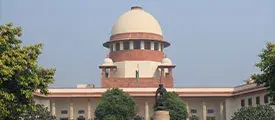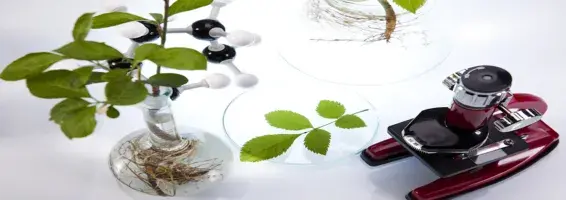Patents in USA
Patent filing in USA is governed by the Patent Act (35 U.S. Code).
The three types of patents issued in USA are Utility Patent, Design Patent and Plant Patent.
Utility Patents
The invention in order to be issued a utility patent must be
- Novel/New
- Useful
- Non-obvious
What is a Utility Patent?
Utility Patents in USA is generally issued for the invention of a new and useful process, machine, manufacture, or composition of matter, or a new and useful improvement thereof. Utility patent when issued allows its owners to exclude others from making, using, or selling the invention. It is the most common type of patent issued by the United States Patent and Trademark Office (USPTO). It is also called ‘patents for inventions’.
Utility patent grants a protection term of 20 years from the date of filing. Maintenance Fee are required to be paid in case of Utility Patent.
The United States is a “relative novelty” country that is the U.S. patent laws provide for a one year grace period from the time of public disclosure or commercial use within which an inventor may file a patent application and still obtain a valid patent.
Design Patent
What is a Design Patent?
Design Patent are issued for a new, original, and ornamental design embodied in or applied to an article of manufacture. Design patent when issued allows its owners to exclude others from making, using, or selling the design. The term period of Design Patent issued for applications filed on or after May 13, 2015 is 15 years from the date of grant and the term period of Design Patent issued for applications filed before May 13, 2015 is 14 years from the date of grant. No maintenance fee is required to be paid for a design patent.
Plant Patent
Plant Patents are issued for a new and distinct, invented or discovered asexually reproduced plant including cultivated sports, mutants, hybrids, and newly found seedlings, other than a tuber propagated plant or a plant found in an uncultivated state. Plant patent when issued allows its owners to exclude others from making, using, or selling the plant. The term period of Plant Patent is 20 years from the date of filing a patent application. No maintenance fee is required to be paid for a plant patent.
| Relevant Office | United States Patent and Trademark Office |
| Law in Force | Patent Act (35 U.S. Code) |
| PCT Contracting State | YES |
| Paris Convention | YES |
| Document(s) required for filing patent application | Name and address of applicant(s) and inventor(s) Priority Details, if applicable Provisional/ Non-Provisional in English The Inventor’s Oath or Declaration |
| Prosecution Process | Search Fee and Examination Fee are paid along with Filing Fee in USPTO. So the Examination starts automatically after the non-provisional patent application is filed. Examination may be expedited under Patent Prosecution Highway (PPH). Non-Final Office Action is issued after the Examination is completed. Response must be filed within 3 months from the date of issuance of the Non-Final Office Action. If the Examiner is not satisfied with the response submitted to the Non-Final Office Action he will issue a Final Office and then a Non-Final Office Action and so on. The time period of 3 months to respond to an Office Action can be extended for a further period of 3 months by filing a request for extension of time. A response to Office Action filed during the extended period should be accompanied by a Request for Continued Examination. If the Examiner is satisfied with the response, application will proceed to acceptance and then registration. After the Notice of Allowance is issued, there is a 3 months’ time period to pay the Issue Fee. After the issued fee is paid the USPTO issues the Patent Certificate. USPTO also requires the submission of Information Disclosure Statement (IDS) before the issuance of Office Action. IDS if submitted after the issuance of Office Action, the same needs to be submitted with an Official Fee. It is generally recommended to always submit IDS with USPTO. |
| Registration Term | The term period of a utility patent is 20 years from the date of filing the patent application. |
| Renewal | Maintenance Fee are due after grant of patent and are required to be paid to keep the patent in force. The maintenance fee are to be paid in the “window period,” which is the 6-month periods preceding each due date for paying the maintenance fee to avoid any surcharge. The window periods are (1) 3 years to 3 1/2 years after the date of issue for the first maintenance fee payment, (2) 7 years to 7 1/2 years after the date of issue for the second maintenance fee payment, and (3) 11 years to 11 1/2 years after the date of issue for the third and final maintenance fee payment. A maintenance fee paid on the last day of a window period can be paid without surcharge. The last day of a window period is the same day of the month the patent was granted 3 years and 6 months, 7 years and 6 months, or 11 years and 6 months after grant of the patent. |
Language
The official language of filing in USA is English. Therefore, English translation of specification and drawings would be required.
Post Grant Review
Post grant review is a trial proceeding conducted at the Board to review the patentability of one or more claims in a patent on any ground that could be raised under § 282(b)(2) or (3). Post grant review process begins with a third party filing a petition on or prior to the date that is 9 months after the grant of the patent or issuance of a reissue patent. The patent owner may file a preliminary response to the petition. A post grant review may be instituted upon a showing that, it is more likely than not that at least one claim challenged is unpatentable. If the proceeding is instituted and not dismissed, a final determination by the Board will be issued within 1 year (extendable for good cause by 6 months). The procedure for conducting post grant review took effect on September 16, 2012, and generally applies to patents issuing from applications subject to first-inventor-to-file provisions of the AIA.
The grounds that could be raised are as follows:
- Invalidity of the patent or any claim in suit on any ground specified in part II of this title as a condition for patentability,
- Invalidity of the patent or any claim in suit for failure to comply with—
(A) any requirement of section 112, except that the failure to disclose the best mode shall not be a basis on which any claim of a patent may be canceled or held invalid or otherwise unenforceable; or (B) any requirement of Section 251.
Related Posts
Trademarks in USA (United States of America)
For more information on Patents in USA please click here:info@ssrana.com








